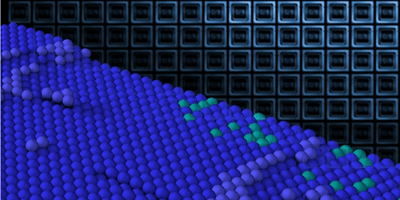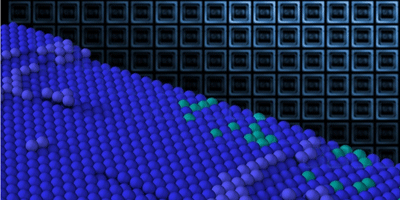An Army of Computing Power
When it comes to studying solid-state systems on a microscopic scale, electronic structure calculations based on density-functional theory (DFT) are among the most popular. Currently, the cost of computational time limits these calculations to periodic systems of about a thousand atoms, which is often too small to describe amorphous and disordered materials, or composite structures, such as thin-film devices.
Writing in Physical Review B, Alexander Thiess, at the Jülich Research Center in Germany, and colleagues report an algorithm that allows tens of thousands of processors to efficiently communicate while performing density-functional calculations. As a result, they are able to calculate the electronic properties of systems ten times larger than what was previously possible with similar methods. To demonstrate their new code, they put processors to work at solving the matrix equation of a system of more than atoms.
This is one of the most precise DFT-based codes available, and unlike algorithms where increasing the size of the system demands an exponential growth in processing power, in Thiess et al.’s approach it scales linearly with system size (at least in the limit that a large number of processors are already being used). This tool will enable researchers to study new problems in large-scale systems, such as the effect of long-range interactions between particles, which is not easily calculated with existing codes. – Hari Dahal





